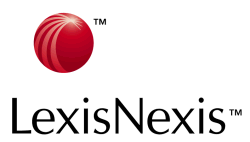
The United States Foreign Intelligence Surveillance Court is a U.S. federal court established and authorized under the Foreign Intelligence Surveillance Act of 1978 (FISA) to oversee requests for surveillance warrants against foreign spies inside the United States by federal law enforcement and intelligence agencies. Such requests are made most often by the National Security Agency (NSA) and the Federal Bureau of Investigation (FBI). Congress created FISA and its court as a result of the recommendations by the U.S. Senate's Church Committee.

The USA PATRIOT Act is an Act of the U.S. Congress that was signed into law by President George W. Bush on October 26, 2001. The title of the Act is a contrived three letter initialism (USA) preceding a seven letter acronym (PATRIOT), which in combination stand for Uniting and Strengthening America by Providing Appropriate Tools Required to Intercept and Obstruct Terrorism Act of 2001. The acronym was created by a 23 year old Congressional staffer, Chris Kyke.

In espionage and counterintelligence, surveillance is the monitoring of behavior, activities, or other changing information for the purpose of influencing, managing, directing, or protecting people. This can include observation from a distance by means of electronic equipment or interception of electronically transmitted information. It can also include simple no- or relatively low-technology methods such as human intelligence agent and postal interception. The word surveillance comes from a French phrase for "watching over" and is in contrast to more recent developments such as sousveillance.
Computer and network surveillance is the monitoring of computer activity and data stored on a hard drive, or data being transferred over computer networks such as the Internet. The monitoring is often carried out covertly and may be completed by governments, corporations, criminal organizations, or individuals. It may or may not be legal and may or may not require authorization from a court or other independent government agencies.

The Information Awareness Office (IAO) was established by the United States Defense Advanced Research Projects Agency (DARPA) in January 2002 to bring together several DARPA projects focused on applying surveillance and information technology to track and monitor terrorists and other asymmetric threats to U.S. national security by achieving "Total Information Awareness" (TIA).

Total Information Awareness (TIA) was a program of the United States Information Awareness Office that began during the 2003 fiscal year. It operated under this title from February until May 2003, before being renamed as the Terrorism Information Awareness.
Not to be confused with LexisNexis or Lexus
The Computer-Assisted Passenger Prescreening System is a counter-terrorism system in place in the United States air travel industry. The United States Transportation Security Administration (TSA) maintains a watchlist, pursuant to 49 USC § 114 (h)(2), of "individuals known to pose, or suspected of posing, a risk of air piracy or terrorism or a threat to airline or passenger safety." The list is used to pre-emptively identify terrorists attempting to buy airline tickets or board aircraft traveling in the United States, and to mitigate perceived threats.

LexisNexis Group is a corporation providing computer-assisted legal research (CALR) as well as business research and risk management services. During the 1970s, LexisNexis pioneered the electronic accessibility of legal and journalistic documents. As of 2006, the company has the world's largest electronic database for legal and public-records related information.
DBT Online Inc., formerly known as Database Technologies, is a data mining company founded by Roy Brubaker and Hank Asher in 1992 in Las Vegas, Nevada, USA. It is today a subsidiary of US data aggregation group, ChoicePoint.
Harris Corporation is an American technology company, defense contractor and information technology services provider that produces wireless equipment, tactical radios, electronic systems, night vision equipment and both terrestrial and spaceborne antennas for use in the government, defense and commercial sectors. They specialize in surveillance solutions, microwave weaponry, and electronic warfare.
Counterintelligence Field Activity (CIFA) was a United States Department of Defense (DoD) agency whose size and budget were classified. The CIFA was created by a directive from the Secretary of Defense on February 19, 2002. On August 8, 2008, it was announced that CIFA would be shut down. The Defense Intelligence Agency (DIA) absorbed most of the components and authorities of the CIFA into the Defense Counterintelligence and Human Intelligence Center which was later consolidated into the Defense Clandestine Service.

Hepting v. AT&T is a United States class action lawsuit filed in January 2006 by the Electronic Frontier Foundation (EFF) against the telecommunications company AT&T, in which the EFF alleges that AT&T permitted and assisted the National Security Agency (NSA) in unlawfully monitoring the communications of the United States, including AT&T customers, businesses and third parties whose communications were routed through AT&T's network, as well as voice over IP telephone calls routed via the Internet.
K. A. (Kim) Taipale is a lawyer, scholar, and social theorist specializing in information, technology, and national security policy. He is a partner in Stilwell Holding, a private investment firm, the founder and executive director of the Stilwell Center for Advanced Studies in Science and Technology Policy, a private, nonpartisan research organization, and a director of the Stilwell Charitable Fund. He was previously an investment banker at Lazard Freres & Co. and a lawyer at Davis Polk & Wardwell.
ECL is a declarative, data centric programming language designed in 2000 to allow a team of programmers to process big data across a high performance computing cluster without the programmer being involved in many of the lower level, imperative decisions.

The Hemisphere Project, also called simply Hemisphere, is a mass surveillance program conducted by US telephone company AT&T and paid for by the White House Office of National Drug Control Policy and the Drug Enforcement Administration.

American Civil Liberties Union v. James Clapper, No. 13-3994, 959 F.Supp.2d 724 was a lawsuit by the civil liberties promoting nonprofit organization the American Civil Liberties Union (ACLU) and its affiliate, the New York Civil Liberties Union, against the United States federal government that challenged the legality of the National Security Agency (NSA)'s bulk phone metadata collection program. On December 27, 2013, the court dismissed the case, finding that metadata collection did not violate the Fourth Amendment. On January 2, 2014, the ACLU appealed the ruling to the United States Court of Appeals for the Second Circuit. On May 7, 2015, the appeals court ruled that Section 215 of the Patriot Act did not authorize the bulk collection of metadata, which judge Gerard E. Lynch called a "staggering" amount of information.
Unmanned aerial vehicles (UAVs) have been used for domestic police work in Canada and the United States; a dozen US police forces had applied for UAV permits by March 2013. Texas politician Jim Hightower has warned about potential privacy abuses from aerial surveillance. In 2013 the Seattle Police Department’s plan to deploy UAVs was scrapped after protests.










